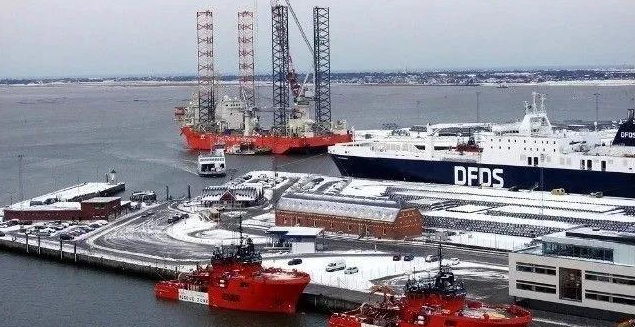- Danish ports reduce carbon emissions to 70%, and will quickly achieve Denmark's decarbonization target

It is understood that the port of Esbjerg, Denmark will use offshore wind energy as a renewable energy source. Through the use of renewable offshore wind energy and energy management systems, the Danish port will become the first port in the maritime industry that is expected to achieve the goal of reducing carbon emissions by 70%. Port Esbjerg, located on the southwest coast of Denmark, is cooperating with Honeywell on a comprehensive decarbonization and energy management project. The project is related to Denmark's goal of achieving decarbonization.


Recently, the port of Esbjerg launched its first shore-to-ship energy installation. Docked ships can use this device to use the renewable energy generated by offshore wind turbines to achieve operations, in this process does not need to use the ship's diesel generators. These shore-to-ship devices can simultaneously power multiple large ships. Ports can plan and manage ship operations and emissions by assessing the carbon footprint of ships and systems that help reduce noise pollution.
Use artificial intelligence
Dennis Jul Pedersen, CEO of the Port of Esbjerg, said: “Considering the scale and complexity of port operations, there is no simple ready-made solution for our green transformation. We worked with Honeywell to develop a fully customized System to monitor energy consumption and emissions, and point out potential opportunities for improvement." Honeywell’s Enacto decarbonization and energy management system is based on cloud computing, allowing the port to monitor emissions and energy consumption of each power outlet and each ship . The system uses artificial intelligence and machine learning algorithms, combined with data collected from port energy consumption or productive assets. If there is a significant change in energy consumption, the system will automatically send a message to the port office stating the anomaly identified immediately and the action that needs to be taken. The system will pay close attention to the carbon emissions of ships and aim to reduce emissions through operational investment in sustainable infrastructure, including the use of renewable energy and future clean fuel technology. Based on the data generated, the Port of Esbjerg can optimize its energy and carbon footprint in real time.
In the next phase of the project, the Port of Esbjerg and Honeywell will monitor and manage water consumption and heating, as well as emissions from terminal operations around the port. The project also includes major investments in electric vehicle technology and hydrogen-powered cranes. The goal is to realize that all vehicles in the port will be powered by electricity by 2025. Edit/Xu Ning Design/WangXia
Comment
 Praise
Praise
 Collect
Collect
 Comment
Comment
 Search
Search














Write something~